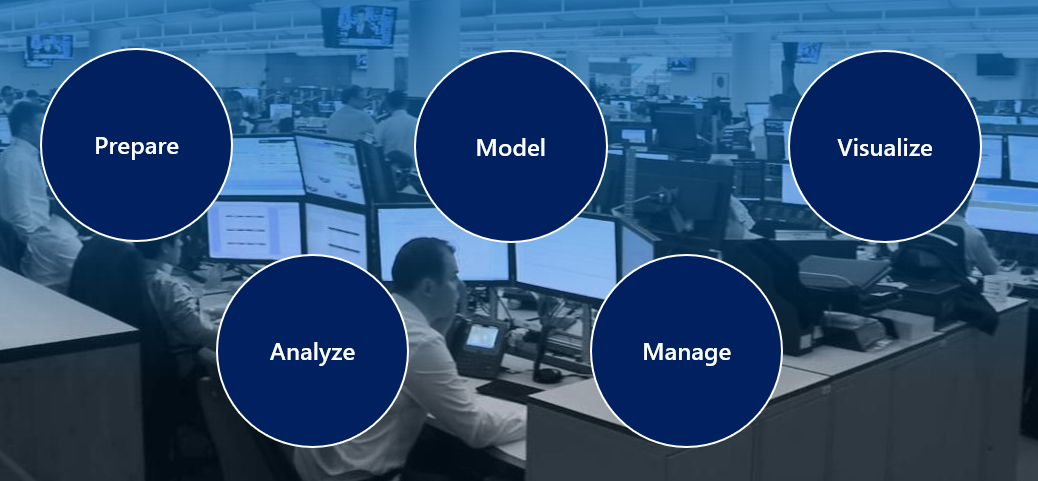The following figure shows the five key areas that you'll engage in during the data analysis process.
Prepare: Before a report can be created, data must be prepared. Data preparation is the process of profiling, cleaning, and transforming your data to get it ready to model and visualize.
Data preparation is the process of taking raw data and turning it into information that is trusted and understandable.
- It involves, among other things, ensuring the integrity of the data.
- correcting wrong or inaccurate data
- identifying missing data
- converting data from one structure to another or from one type to another.
Data preparation also involves understanding how you're going to get and connect to the data.
Privacy and security assurances are also important. These assurances can include anonymizing data to avoid oversharing or preventing people from seeing personally identifiable information when it isn't needed.
Model: Data modeling is the process of determining how your tables are related to each other. This process is done by defining and creating relationships between the tables.
An effective data model makes reports more accurate, allows the data to be explored faster and more efficient, decreases time for the report writing process, and simplifies future report maintenance.
a well-designed model with well-prepared data will ensure a properly efficient and trusted report.
Visualize: The ultimate goal of the visualize task is to solve business problems. A well-designed report should tell a compelling story about that data, which will enable business decision makers to quickly gain needed insights.
The reports that are created during the visualization task help businesses and decision makers understand what that data means so that accurate and vital decisions can be made. Reports drive the overall actions, decisions, and behaviors of an organization that is trusting and relying on the information that is discovered in the data.
Analyze: With advanced analytics, organizations can drill into the data to predict future patterns and trends, identify activities and behaviors, and enable businesses to ask the appropriate questions about their data.
Manage: Power BI consists of many components, including reports, dashboards, workspaces, datasets, and more. As a data analyst, you are responsible for the management of these Power BI assets, overseeing the sharing and distribution of items, such as reports and dashboards, and ensuring the security of Power BI assets.

No comments:
Post a Comment